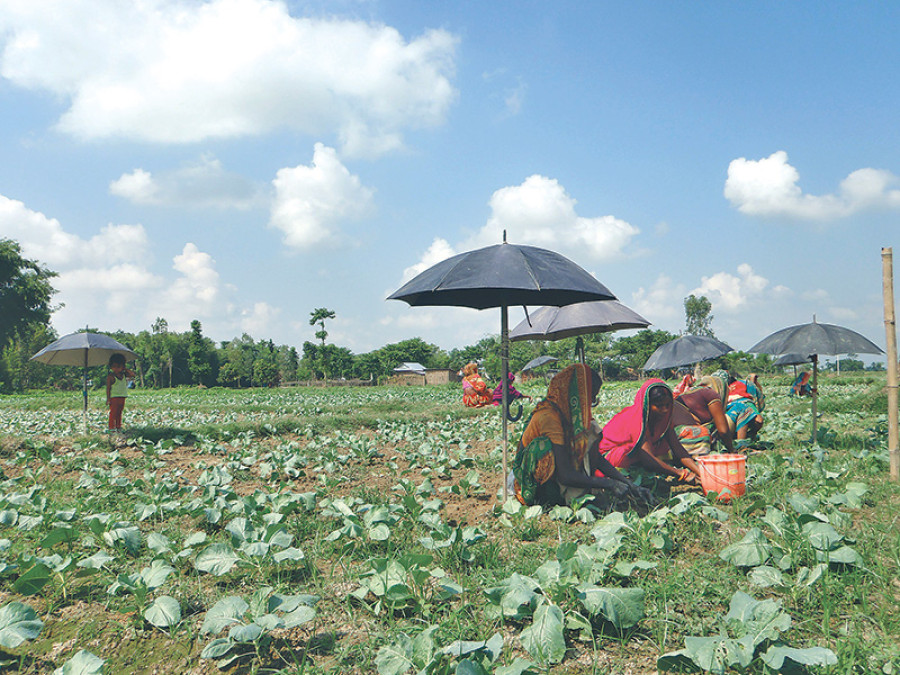Money
Farming timetable goes haywire due to floods
It’s scorching outside, but the heat does not bother farmers of Harinagara Rural Municipality in the eastern Nepali district of Sunsari who are out in the fields to tend the cauliflowers they have planted.
Jitendra Sah
It’s scorching outside, but the heat does not bother farmers of Harinagara Rural Municipality in the eastern Nepali district of Sunsari who are out in the fields to tend the cauliflowers they have planted.
Farmers generally harvest the vegetables and ship them to market at this time of the year. But everything went haywire this year because of the August floods which swept away seedlings, forcing farmers to replant their cauliflowers.
“Had there been no flood, the cauliflowers would have been ready for harvest by now,” said 35-year-old Janaki Devi Mandal, a farm hand. “We are now one month behind schedule.”
Harinagara Rural Municipality is one of biggest cauliflower production hubs in the country. Farmers here begin planting the vegetable in mid-July. They start harvesting the produce as early as October, and the harvest season continues till mid-December.
This production cycle, however, has been disrupted this time and created anxiety among farmers who are likely to lose a big chunk of income.
Bachchu Mandal, a 70-year-old farmer, for instance, had spent Rs7,000 in importing cauliflower seedlings from Samastipur in the Indian state of Bihar. The seedlings would have been enough to grow around 6,000 kg of cauliflower on his one bigha of farmland.
“But all the seedlings were swept away by the floods, and I was forced to replant them,” Bachchu said. So far, he has been able to plant seedlings on only half of the field.
“I don’t know what will happen to me this time,” he said.
Kishori Paudar, a 55-year-old farmer, is facing a similar predicament. Paudar had bought 12 seed beds for Rs5,000 for his farmland spread over 12 katthas. “All the seedbeds were swept away by the floodwaters,” said Paudar, who used to grow 500 kg of cauliflowers on each kattha of land.
Paudar used to save Rs50,000 to Rs60,000 every season by selling cauliflowers worth Rs150,000. “I don’t know how much will I earn this year, as most of the farmers have started replanting cauliflowers at around the same time. This will flood the market with cauliflowers during harvest time. The oversupply will drive down prices,” Paudar said.
The government has promised to come to the aid of farmers like Paudar and Bachchu, but it has not introduced the pledged relief package till date.
“Officials come to collect details of the damage and take pictures of our fields then disappear,” Bachchu said. “We would be greatly relieved if the government provides compensation just for seedlings and fertilisers.”
The disruption in the production cycle of cauliflower has not only affected farmers but daily wage labourers too. “We used to send the first batch of cauliflowers to market by this time of the year, and engage in the second round of plantation,” said Janaki, who earns Rs300 per day. “But because of the floods, we had to wait till the water level subsided.”
During that period, labourers like Janaki remained unemployed and lost “around Rs30,000 to Rs35,000” in wages.




 18.12°C Kathmandu
18.12°C Kathmandu














